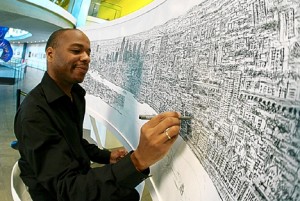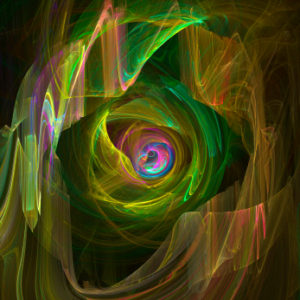 From recent scientific findings, it is certainly possible that quite unusual talents and experiences could be available to everyone. This post will outline extraordinary talents and experiences that may be available to everyone under certain circumstances. It is a summary and update of a series of four posts on research into sudden changes in capacities for extreme memory, mathematics, art and music; changes in body consciousness, and out of body experiences; psychedelic experiences; and peak experiences, changes in meaning, visions, end of life and spiritual experiences. These states are triggered in a variety of ways, but all seem to occur when brain regions are altered that ordinarily inhibit extreme experiences. A recent study showed that the brain uses two important brain circuits in a mutually exclusive way. That is, when one operates the other is inhibited. These two circuits are for task orientation about objects and the default mode network involved in understanding the reasoning of other people. Therefore, it is possible that other circuits are also mutually exclusive and that one has to be shut down for the hidden talents to appear. When we ask the question could everyone have hidden extraordinary talents and experiences, the answer might well be yes.
From recent scientific findings, it is certainly possible that quite unusual talents and experiences could be available to everyone. This post will outline extraordinary talents and experiences that may be available to everyone under certain circumstances. It is a summary and update of a series of four posts on research into sudden changes in capacities for extreme memory, mathematics, art and music; changes in body consciousness, and out of body experiences; psychedelic experiences; and peak experiences, changes in meaning, visions, end of life and spiritual experiences. These states are triggered in a variety of ways, but all seem to occur when brain regions are altered that ordinarily inhibit extreme experiences. A recent study showed that the brain uses two important brain circuits in a mutually exclusive way. That is, when one operates the other is inhibited. These two circuits are for task orientation about objects and the default mode network involved in understanding the reasoning of other people. Therefore, it is possible that other circuits are also mutually exclusive and that one has to be shut down for the hidden talents to appear. When we ask the question could everyone have hidden extraordinary talents and experiences, the answer might well be yes.
Ordinary Consciousness
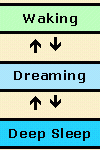 Everyone lives in three different states: waking, sleeping and deep sleep. Are we the same person in each of the three daily states of consciousness or are we three different people? The self-identity exists in waking and dream consciousness and exists just before and after deep sleep, even though our experiences are radically different in each of these states.
Everyone lives in three different states: waking, sleeping and deep sleep. Are we the same person in each of the three daily states of consciousness or are we three different people? The self-identity exists in waking and dream consciousness and exists just before and after deep sleep, even though our experiences are radically different in each of these states.
Normal states of waking, sleep and deep sleep are not always so normal. There is a continuum in ordinary life from wakefulness to sleepiness and hyper alert states. Just before falling asleep and just after awakening, it is possible to have unusual “hypnogogic hallucinations” that are dreamlike states while awake. Much of our day-to-day experience is unconscious, such as driving without even being consciously aware. But, practices such as meditation can increase the conscious experience of some of our unconscious states. In crises, the unusual experience of time slowing down occurs because of intense concentration on each detail of the evolving experience.
 Dreams are very unusual mental states, which we experience each night. No one knows whether dreams are random mental aberrations as part of a neuronal cleansing of synapses, or a coherent world of experience equivalent in some ways, but very different from, our waking consciousness. In dreams we have a continued self-identity, but with unconstrained consciousness and a paralyzed body (so we can’t hurt ourselves acting on the bizarre events unfolding). But, with training in “lucid dreaming” we can actively participate in the unusual world of dreams. Deep sleep that is experienced every night is an unusual state that confers increased memory and great health benefits. Advanced meditation has some similarities to the brain state of deep sleep but with awareness and relaxation.
Dreams are very unusual mental states, which we experience each night. No one knows whether dreams are random mental aberrations as part of a neuronal cleansing of synapses, or a coherent world of experience equivalent in some ways, but very different from, our waking consciousness. In dreams we have a continued self-identity, but with unconstrained consciousness and a paralyzed body (so we can’t hurt ourselves acting on the bizarre events unfolding). But, with training in “lucid dreaming” we can actively participate in the unusual world of dreams. Deep sleep that is experienced every night is an unusual state that confers increased memory and great health benefits. Advanced meditation has some similarities to the brain state of deep sleep but with awareness and relaxation.
Super Talents
Super Autobiographical Memory: One unusual capacity is super autobiographical memory. A small number of people can remember every moment of their lives since age ten including the events, the weather and the people present. These people have striking increases in axonal connections in nine different brain memory regions, and enlargement in the temporal lobes, hippocampus and caudate nucleus.
 Synesthesia: Synesthesia is an experience of multiple senses when one sense is stimulated. Examples include perceiving colors when looking at or thinking about letters or numbers; seeing personalities and emotions with numbers or days; or seeing scenes with each number or date. Research shows that the combining of senses in brain circuits is much more common than previously thought since much of the normal brain has a high percentage of neurons with integration of multiple different senses.
Synesthesia: Synesthesia is an experience of multiple senses when one sense is stimulated. Examples include perceiving colors when looking at or thinking about letters or numbers; seeing personalities and emotions with numbers or days; or seeing scenes with each number or date. Research shows that the combining of senses in brain circuits is much more common than previously thought since much of the normal brain has a high percentage of neurons with integration of multiple different senses.
When Daniel Tammet was able to remember forty thousand digits of Pi, he said he did this by “seeing” unique colors, shapes and textures for each number up to 10,000 which helped him order and remember the extraordinary amount of digits.
 Savants: The most extraordinary super talents are demonstrated by savants who can do extreme calendar calculation, extreme mathematical calculations, or have advanced art and musical ability all without any training.
Savants: The most extraordinary super talents are demonstrated by savants who can do extreme calendar calculation, extreme mathematical calculations, or have advanced art and musical ability all without any training.
What is most unusual is that often these capacities suddenly occur after brain injuries and other types of accidents. Even those who have savant abilities without sudden injury often have pre-existing brain illness.
- Kim Peek, known as Rain Man, had a low IQ, difficulty walking, and inability to dress himself. But had remarkable photographic memory — able to read 2 pages in seconds and remember every detail of 12,000 books. His brain had the abnormality of a limited corpus callosum.
 Steven Wiltshire was autistic and mute when he started drawing. He draws extremely accurate panoramic pictures of landscapes after seeing scenes very briefly.
Steven Wiltshire was autistic and mute when he started drawing. He draws extremely accurate panoramic pictures of landscapes after seeing scenes very briefly.
- Savants can suddenly play any piece of music after hearing it very briefly, and can do extreme calculations, such as instantly knowing the day of the week of a date a thousand years ago.
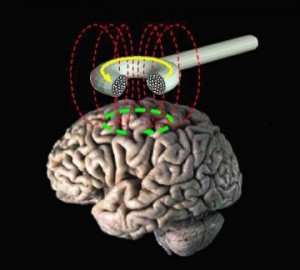 Accidental Savants: Perhaps, the most interesting fact is that these talents occur suddenly after a variety of traumatic brain injuries, high fevers, dementia, brain hemorrhage and stroke. Also, transcranial magnetic stimulation, TMS, paralyzes parts of the brain, which can produce savant capacities for a brief time. Accidental savants do not come from a particular group or society. They don’t understand where the talents come from, and they emerge suddenly without training.
Accidental Savants: Perhaps, the most interesting fact is that these talents occur suddenly after a variety of traumatic brain injuries, high fevers, dementia, brain hemorrhage and stroke. Also, transcranial magnetic stimulation, TMS, paralyzes parts of the brain, which can produce savant capacities for a brief time. Accidental savants do not come from a particular group or society. They don’t understand where the talents come from, and they emerge suddenly without training.
All of these factors point to the fact that a part of the normal brain represses the talents, which are then released when the controlling region is damaged or altered. This would imply that the talents could exist in each of us, if the inhibition of ordinary brain regions is disabled.
Body Consciousness and Out of Body Experience
 There are many different body maps in the brain that are constantly changing. For example, the body map is altered by using a tool or an instrument or while sitting in a wheel chair or riding on a horse. Internal states and feelings are connected with these brain body maps. Our ordinary sense of self is highly connected to us being identified with our body and these changing body maps. Because the maps constantly change it is thought that our attachment to the body could change also.
There are many different body maps in the brain that are constantly changing. For example, the body map is altered by using a tool or an instrument or while sitting in a wheel chair or riding on a horse. Internal states and feelings are connected with these brain body maps. Our ordinary sense of self is highly connected to us being identified with our body and these changing body maps. Because the maps constantly change it is thought that our attachment to the body could change also.
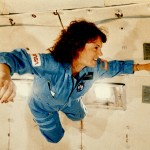 Previously, most scientists thought that out of body experiences, or the detachment of the sense of self with the body, were psychotic experiences. Recently, this changed when researchers using virtual reality gear were able to trigger out of body experiences in anyone. This occurs when people see a conflict of vision, touch and position sense.
Previously, most scientists thought that out of body experiences, or the detachment of the sense of self with the body, were psychotic experiences. Recently, this changed when researchers using virtual reality gear were able to trigger out of body experiences in anyone. This occurs when people see a conflict of vision, touch and position sense.
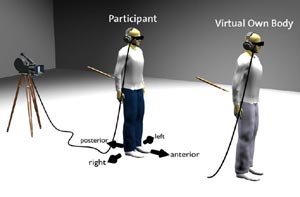 Now, it has become clear that out of body experiences occur normally in a wide variety of circumstances. Triggers include weightlessness while travelling in space, sleep paralysis, and crises such as extreme sensory overload in accidents, childbirth and extreme stress. They also occur in sensory deprivation tanks or white out conditions in mountains, and near death experiences. Again, TMS, by temporarily disabling parts of the normal brain can also stimulate out of body experiences.
Now, it has become clear that out of body experiences occur normally in a wide variety of circumstances. Triggers include weightlessness while travelling in space, sleep paralysis, and crises such as extreme sensory overload in accidents, childbirth and extreme stress. They also occur in sensory deprivation tanks or white out conditions in mountains, and near death experiences. Again, TMS, by temporarily disabling parts of the normal brain can also stimulate out of body experiences.
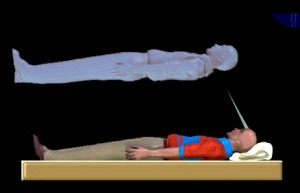 In general, we refer to “our body”, much as we would refer to “our car” or “our house”. We do not refer to our body as “the body.” Also, when imagining a scene including ourself and others, the picture is seen in third person. That is, in our mind’s eye we see ourselves standing with the group.
In general, we refer to “our body”, much as we would refer to “our car” or “our house”. We do not refer to our body as “the body.” Also, when imagining a scene including ourself and others, the picture is seen in third person. That is, in our mind’s eye we see ourselves standing with the group.
Given all of this data, it does seem that it is possible to separate the body sense from the self-experience. Decreasing attachment of our identity to the body sense appears to be related to the release of dramatic experiences. Some schools of advanced meditation instruct students to attempt to decrease the attachment of the self and the body, which can stimulate advanced meditation states and spiritual insight.
Psychedelics
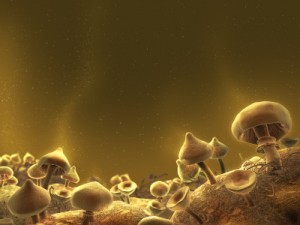 It is unfortunate for science that all research into the important brain chemicals called psychedelics were censored for an entire generation. This has definitely slowed neuroscientific study of the brain.
It is unfortunate for science that all research into the important brain chemicals called psychedelics were censored for an entire generation. This has definitely slowed neuroscientific study of the brain.
Studies thirty years ago with LSD, psilocybin, and mescaline showed very unusual properties including stimulation of significant personal religious experiences and help with a variety of different types of psychotherapy including decreasing fear in terminal illness. Another finding from the old studies is that many people exposed to psychedelic experiences altered their lifestyle in the direction of spirituality, including conventional and modern religious practices and meditation.
Recently, the censorship of research has been alleviated somewhat and a study at John’s Hopkins Medical School showed that with one dose of psilocybin (traditionally used in some Native American religious ceremonies) 64% of ordinary people experienced “one of the most spiritually significant experiences of their life”. 58% rated it as one of 5 most meaningful experiences in their life. Recent research is again finding that cancer patients show improvement in their ability to cope with terminal illness using therapy with psychedelics.
Very Counter Intuitive Brain Findings with Psychedelics
Recently, however, brain research has shown some very counter intuitive results. While the people taking psychedelics experience floods of sensory data including a changing sense of time, space, color, and kaleidoscopic experiences, the brain imaging shows something very different.
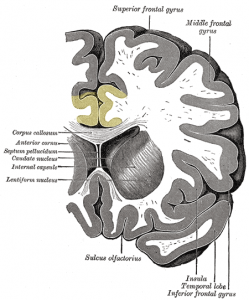 The brain, at the time of these very extreme subjective experiences, shows reduced activity in many of the most important parts of the brain that we have assumed would be exactly the opposite. The brain regions with reduced activity include the default mode network, the thalamus (the center of sensory input), the medial prefrontal cortex (mPFC) and the posterior cingulate cortex PCC – (the center of introspection).
The brain, at the time of these very extreme subjective experiences, shows reduced activity in many of the most important parts of the brain that we have assumed would be exactly the opposite. The brain regions with reduced activity include the default mode network, the thalamus (the center of sensory input), the medial prefrontal cortex (mPFC) and the posterior cingulate cortex PCC – (the center of introspection).
Even more baffling is that the stronger the subjective experiences the greater the reductions in brain activity in all important hubs.
Previously, it was assumed that increased subjective experience would correlate with increased brain activity. But, in seizures there is increased brain activity with reduced subjective experience.
A possible explanation might a release of unconstrained cognition by decreased brain connectivity.
Like savants and out of body experiences, the decreased activity, somehow, triggers subjective transcendent experiences. Is this an exposure to a deeper experience of mind with a quiet brain?
Spiritual Experiences
Peak Experiences and High Integration States: Older descriptions of “peak experiences” are similar to recent descriptions of “high brain integration states.” These experiences have more coherent EEGs and more efficient brain function than normal brains. The brain states correlate with inner calm, maximum wakefulness, alertness, lack of fear, effortlessness, a sense of perfection, a feeling of “high”, better self image, better sleep and increased moral development.
 Awe: Studies of the experience of awe, when exposed to vastness of size, complexity, bravery, compassion or social importance, show that it alters priorities and concerns. After an experience of awe, self-identification changes and there is more altruistic behavior and less concern for possessions.
Awe: Studies of the experience of awe, when exposed to vastness of size, complexity, bravery, compassion or social importance, show that it alters priorities and concerns. After an experience of awe, self-identification changes and there is more altruistic behavior and less concern for possessions.
Near Death: Near death experiences, involving life threatening physical conditions, which affect blood pressure and heart rate, can alter perspective in the spiritual direction. However, while fainting, blood is shunted  from the visual system, which might explain the experience of tunnels.
from the visual system, which might explain the experience of tunnels.
In many extreme states there may be a sudden shift from a fearful state to the blissful state and this may involve a trigger from autonomic sympathetic fight and flight to the parasympathetic blissful state. There is often a blending of extreme wakefulness  associated with the fearful autonomic sympathetic state, and a dream like state triggered by the acetylcholine of the parasympathetic state. Some of the experiences might be a blending of the extreme wakeful and the dream like states.
associated with the fearful autonomic sympathetic state, and a dream like state triggered by the acetylcholine of the parasympathetic state. Some of the experiences might be a blending of the extreme wakeful and the dream like states.
Visions: Research into spiritual visions show that most do not have a psychiatric cause. Brain studies show a state of someone talking to himself or herself. Spiritual visions occur more likely with those who have more absorption in nature and fantasy and those who are hypnotizable. Like meditation, it is a learned skill and is usually experienced as part of spiritual practice in a religious community, which allows such experiences as normal – more auditory experiences for religions emphasizing “hearing God” and more vision experiences for religions emphasizing “seeing God.”
 Meditation: Meditation trains the brain to have more integrated synchronous brain waves, to change the resting brain state to include more self observation, less stress, and many physical benefits. Meditation is remarkable in its effects on the immune system, multiple genes, many physical states, and emotional symptoms of anxiety, stress and depression. (For details see my recent post Meditation Update 2013).
Meditation: Meditation trains the brain to have more integrated synchronous brain waves, to change the resting brain state to include more self observation, less stress, and many physical benefits. Meditation is remarkable in its effects on the immune system, multiple genes, many physical states, and emotional symptoms of anxiety, stress and depression. (For details see my recent post Meditation Update 2013).
Meditation practice trains the brain to be less judgmental, and allows the disinhibiting of circuits to allow new unusual experiences. It is similar in this respect with the other unusual experiences–talents, out of body experiences, and psychedelics.
 Spiritual Experiences: Spiritual experiences are difficult to define because they are sudden and personal. They involve a change in perspective and a sense of oneness. Because they are sudden and unexpected, they are difficult to study. Spiritual experiences include increased insight and knowledge, and usually a sense of bliss – sometimes fear suddenly flipping to bliss.
Spiritual Experiences: Spiritual experiences are difficult to define because they are sudden and personal. They involve a change in perspective and a sense of oneness. Because they are sudden and unexpected, they are difficult to study. Spiritual experiences include increased insight and knowledge, and usually a sense of bliss – sometimes fear suddenly flipping to bliss.
Precipitants of spiritual experiences include awe, meditation, prayer, music, dance, extended exertion, fasting, medical illness, near death experience, psychedelics, and brain injuries including stroke and epilepsy.
Neuroplasticity
Are these states related to neuroplasticity? Special neuroplastic states occur after exercise, in deep sleep, in psychotherapies, meditation and with focused attention. The brain is able to change itself with new neurons and new and strengthened brain circuits.
Previous posts have detailed the remarkable way that the neurons, synapses and circuits are remodeled with hundreds of different intricate mechanisms, starting in milliseconds after a thought or experience. Focusing the mind brings about stronger circuits in larger networks, and direct changes to specific syapses. How thought is instantly translated in complex chemical changes in cells is not known. Whether these extraordinary experiences are part of neuroplastic changes in brain circuits is not known. It is possible the circuits related to the extraordinary experiences already exist and further develop in certain circumstances and with spiritual practices.
Does Everyone Have Hidden Extraordinary Talents and Experiences
It does appear that if sudden talents suddenly appear with brain injuries, TMS, or other ways of shifting the ordinary controls on behavior and experience, that these potential talents and experiences are potentially available to everyone. Examples include spiritual practices and meditation triggering these experiences by specific techniques. Lucid dreaming is, also, a learned skill for most.
 Our ordinary self-identity is routinely defined by our autobiographical memory, our profession, training, family, friends, interests, beliefs and our body. Perhaps, all of this must be transcended for these talents and experiences to be released, which is the reason these states are temporary or if permanent they involve permanent brain illness. To fully incorporate extraordinary experiences into daily life takes a long period of time, where priorities are gradually rearranged to allow spiritual and unusual experiences to coexist with our daily experience in ordinary life. This is, perhaps, why it takes many years of gradual adaptation of insight, learning, and experience from spiritual practice for it to be an active part of normal daily life. The other, temporary, dramatic effects of psychedelics and other triggers of spiritual experience, are just directional signals in the mind, but can not be maintained in normal life.
Our ordinary self-identity is routinely defined by our autobiographical memory, our profession, training, family, friends, interests, beliefs and our body. Perhaps, all of this must be transcended for these talents and experiences to be released, which is the reason these states are temporary or if permanent they involve permanent brain illness. To fully incorporate extraordinary experiences into daily life takes a long period of time, where priorities are gradually rearranged to allow spiritual and unusual experiences to coexist with our daily experience in ordinary life. This is, perhaps, why it takes many years of gradual adaptation of insight, learning, and experience from spiritual practice for it to be an active part of normal daily life. The other, temporary, dramatic effects of psychedelics and other triggers of spiritual experience, are just directional signals in the mind, but can not be maintained in normal life.
It does appear from current research that most of these states are available to anyone, either from sudden extreme circumstances or with consistent practice such as meditation or lucid dreaming.
